Industry standards establish “operator’s manual” for comparing algae technology performance
Washington DC (February 6, 2013) The Algae Biomass Organization (ABO), the trade association for the algae industry, announced the publication of “Industrial Algae Measurements, Version 6.0” (IAM 6.0), a significant update to the common standards established by the organization for measuring and comparing algae industry operations. As more companies develop and improve new technologies to create fuels, feeds, nutritional supplements, biochemicals and other products from algae, this document will be a vital tool for researchers calculating and comparing disparate methods. It is available for download for free at https://algaebiomass.org/resource-center/technical-standards/introduction/.
Algae operations vary widely in size and in the technologies used, making performance comparisons across the industry difficult. The lack of a common language to describe the economic and environmental impact of an algae production facility, including all inputs and outputs, has been a challenge for anyone seeking to evaluate a specific process. The IAM 6.0 establishes a methodology and common descriptive language that can be applied across a variety of algae operations, regardless of size, technology or end products.
“The fast pace of development in the algae industry makes a standard-setting document like this absolutely necessary,” said Dr. Lieve Laurens, Chair of the ABO’s Technical Standards Committee and Senior Scientist at the National Renewable Energy Laboratory. “The descriptive language established by the ABO will help compare and quantify how diverse algae technologies are performing, and how they measure up at commercial production scale. This can help give information to commercial and industrial groups and could be considered an operator’s manual for building the algae industry. The document provides references and resources for anyone looking into regulatory, characterization, and certification routes for biofuels and bioproducts.”
The IAM 6.0 recommends the methodologies that can characterize economic and environmental inputs of almost any algae biomass operation. These operations include heterotrophic, autotrophic, open pond, photobioreactor and open water algae production as well as harvest and conversion processes for microalgae, macro algae and cyanobacteria. The inputs considered by the standards include the carbon, water, energy and nutrients required by the algae as well as land requirements, process consumables and manpower requirements used during production. Outputs measured by the standards include the different classes of algal products as well as industrial waste emissions such as gas, liquid, and solid discharges.
The ABO published the first edition of this reference document in 2010 (originally titled “Algal Industry Minimum Descriptive Language”). It was the first time the notion of a common language in the algae industry had been articulated for measuring algae industry inputs and outputs.
Since then, algae technology and commercial development have undergone dramatic changes that only enhance the need to apply standards that can compare efforts among researchers, producers and suppliers. In 2013, Sapphire Energy began producing renewable crude oil at the world’s first algae-to-energy farm in New Mexico. In Florida, Algenol’s algae-to-ethanol technology achieved annual production yields nearing 10,000 gallons per acre. And in Arizona, Heliae commissioned its first commercial facility producing algae-derived nutraceutical and personal care products. Fortune 500 companies have made large investments in the technology around the world and several governments are racing to adjust policies that can accelerate the industry’s growth.
“The critical standards found in this document are the result of the hard work, foresight and expertise of the ABO’s Technical Standards Committee,” said Margaret McCormick, Chair of ABO’s Board of Directors. “The ABO’s membership extends its gratitude to the countless hours of volunteer consultation that these leading experts gave to establish a set of common measurements for a new and promising industry.”
The ABO Technical Standards Committee authors of “Industrial Algae Measurements 6.0,” are:
- Dr. Lieve Laurens – Committee Chair, Senior Scientist, National Renewable Energy Laboratory
- Dr. Keith Cooksey – Committee Co-Chair, Environmental Biotechnology Consultants, Professor Emeritus, Montana State University; and ABO Board Member
- Jim Sears – Former ABO Committee Chair, coordinating author of IAM 6.0, New Product Development, Boulder Labs Inc., and CTO, A2BE Carbon Capture LLC.
- Dr. Rose Ann Cattolico, Professor of Algal Biology, University of Washington
- Dr. Mark Edwards, Professor, Arizona State University Morrison School of Agribusiness and Resource Management, Vice President at Algae Biosciences Inc.
- Steve Howell, President and founder of MARC-IV, Chairman of the ASTM task force on biodiesel standards
- Adonis Neblett, Attorney, Minnesota Pollution Control Agency
- Dr. Robert McCormick, Principal Engineer, Fuels Performance, National Renewable Energy Laboratory
- Dr. Philip Pienkos, Applied Sciences Group Manager, National Renewable Energy Laboratory
- Gina Clapper, Technical Specialist, AOCS American Oil Chemists Society
- Pat Ahlm, Assistant Director, Government and Regulatory Affairs at Algenol Biofuels Inc.
More than 30 industry experts and organizations reviewed and commented on the document, including individuals from industry associations, national labs, companies and research institutions.
With new production facilities planned or operating around the U.S., the algae industry is rapidly emerging as an opportunity to address many of the energy, food, economic, and environmental challenges facing the world today. Algae have the power to simultaneously put fuels in vehicles, recycle CO2, provide nutrition for animals and people and create jobs for millions of Americans. Algae’s ability to produce high yields, grow in saltwater and on marginal lands means that they can be cultivated at large scales without harmful impacts on freshwater supplies or valuable agricultural land. More information can be found at www.allaboutalgae.com.
About the Algae Biomass Organization
The Algae Biomass Organization (ABO) is a 501(c)(6) non-profit whose mission is to promote the development of viable commercial markets for renewable and sustainable commodities derived from algae. Its membership is comprised of people, companies and organizations across the value chain. More information about ABO, including its leadership, membership, costs, benefits and members and their affiliations, is available at the website: www.algaebiomass.org.
